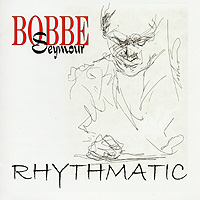 A
true trendsetter of decades past, up and into the early 21st century
steel guitar music world, Upstate New York bred / Nashville based
guitarist Bobbe Seymour has enough steel guitar knowledge in him to
fill a book. Or certainly a web site, and you can further explore
Bobbe’s many fine CD’s on his SteelGuitar.net web site.
Of course, Seymour is also well known among guitar fans for all things
steel guitar as well as his Steel Guitar Nashville showroom down in
Hendersonville, Tennessee. I was fortunate to review Bobbe’s
Soulful Steel CD for 20th Century Guitar magazine back in
2000. That disc remains simply one of the great instrumental albums
of steel guitar magic ever made. Backed up by a range of players,
Bobbe’s steel guitar track of George Harrison’s “Something”
rates among of the coolest instrumentals ever of a Beatles song and
Bobbe's version on Soulful Steel even rivals the great 1970
version of the song by Hank Marvin and The Shadows. Another more recent
outing from Bobbe a little while back, just in early 2006, Rhythmatic
is filled with upbeat, original steel guitar based instrumentals
that merge every possible genre of music within Seymour’s wide
screen vision of the steel guitar. Supported by a range of players
on Rhythmatic, Seymour’s eclectic steel and electric guitar
style moves into soundtrack sounds,
A
true trendsetter of decades past, up and into the early 21st century
steel guitar music world, Upstate New York bred / Nashville based
guitarist Bobbe Seymour has enough steel guitar knowledge in him to
fill a book. Or certainly a web site, and you can further explore
Bobbe’s many fine CD’s on his SteelGuitar.net web site.
Of course, Seymour is also well known among guitar fans for all things
steel guitar as well as his Steel Guitar Nashville showroom down in
Hendersonville, Tennessee. I was fortunate to review Bobbe’s
Soulful Steel CD for 20th Century Guitar magazine back in
2000. That disc remains simply one of the great instrumental albums
of steel guitar magic ever made. Backed up by a range of players,
Bobbe’s steel guitar track of George Harrison’s “Something”
rates among of the coolest instrumentals ever of a Beatles song and
Bobbe's version on Soulful Steel even rivals the great 1970
version of the song by Hank Marvin and The Shadows. Another more recent
outing from Bobbe a little while back, just in early 2006, Rhythmatic
is filled with upbeat, original steel guitar based instrumentals
that merge every possible genre of music within Seymour’s wide
screen vision of the steel guitar. Supported by a range of players
on Rhythmatic, Seymour’s eclectic steel and electric guitar
style moves into soundtrack sounds, Shadows / Ventures style rock guitar instros on steel guitar, then
veers into liquid blues filled with the punch of Chicago horns, and
then its on to Salsa rhythms, World Beat grooves, a touch of New Age
and jazzy R&B sounds too. It’s almost like there’s no
genre of instrumental music Seymour can't adapt on the steel guitar.
When it comes to all things steel guitar—from wide ranging instrumental
CD recordings, to the instrument itself along with all the paraphernalia
that goes along with it—think Bobbe Seymour. www.SteelGuitar.net
Shadows / Ventures style rock guitar instros on steel guitar, then
veers into liquid blues filled with the punch of Chicago horns, and
then its on to Salsa rhythms, World Beat grooves, a touch of New Age
and jazzy R&B sounds too. It’s almost like there’s no
genre of instrumental music Seymour can't adapt on the steel guitar.
When it comes to all things steel guitar—from wide ranging instrumental
CD recordings, to the instrument itself along with all the paraphernalia
that goes along with it—think Bobbe Seymour. www.SteelGuitar.net
MWE3.com
presents an interview with
BOBBE SEYMOUR
{The
following interview was recorded on February 24, 2010}
MWE3: I heard that you’d had an accident last week. Sorry to
hear that...
BS: I’ve had all kinds of scans and x-rays because of it and
now I know what kind of shape I’m in all over. And I’m in
better shape generally than I thought I was. So I’m just going
to smile and go on.
MWE3: Michelle in your office there said you’d broken your wrist
and...
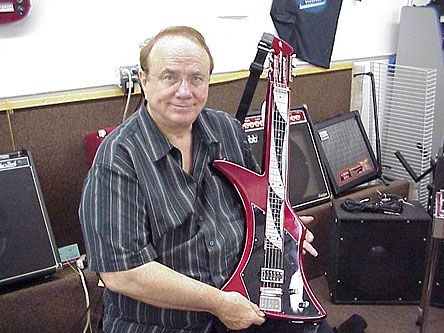 BS: Yeah,
left leg and pelvis, just a whole bunch of things. (laughter)
BS: Yeah,
left leg and pelvis, just a whole bunch of things. (laughter)
MWE3: How and when did you decide to move from New York to Nashville
and can you say something about your early memories of New York?
BS: Well the thing is, I was born in the rural part of New York state
on a dairy farm out next to Lake Erie. When it came to New York City,
I never went to New York City until I left New York state and moved
to Nashville. Then I went to New York City many times, playing and
TV things and that kind of thing, but I never even got to see New
York City till I moved out of the state and came south. Isn’t
that funny?
MWE3: That’s the northeast part of the state?
BS: Southwest. Near Erie, Pennsylvania. We were a half hour from Erie,
Pennsylvania. I was about fifteen miles from Lake Erie. I went to
school in a place called Chautauqua, New York, which is kind of a
resort area now.
MWE3: You were exposed to the steel guitar at a very young age. That
must have been a great experience. What were some of your early impressions
of the steel guitar?
BS: My uncle, yeah. I always wanted to play in the worst way, and
now I do! (laughter) He was a very knowledgeable player. He didn’t
really play extremely well even though he did a lot of professional
jobs, but he knew what he was doing and he knew how to play everything
correctly. And I didn’t really know what I was doing, but I sounded
great, you know what I mean? I did combinations of what was right
and mixed ‘em in with what sounded good and what I came up with
was me.
MWE3: So you went straight to Nashville from New York in 1955?
BS: We’re going back to the ‘50s, we’re going back
to about ‘55, ‘56 Actually I went to Virginia for a little
while and then joined the Air Force and they sent me to Gene Autry,
Oklahoma where I really got into Western Swing. And then got out of
the Air Force and went to Dallas, Texas and from Dallas I went to
Nashville and had a great time in Nashville for a while. Went back
to Texas for a little while. I thought there was a better fortune
in Nashville that there is in Dallas, but sure enough I was wrong
I guess. (laughter) I liked Western Swing real well but then again,
if you play anything right and get far enough out with it, it’s
gonna be interesting. It was the jazz things that really turned me
on, and the big chord things are fun for me but of course, that’s
not really where the money is. You have to go where the money is to
be able to pay for what you want to do.
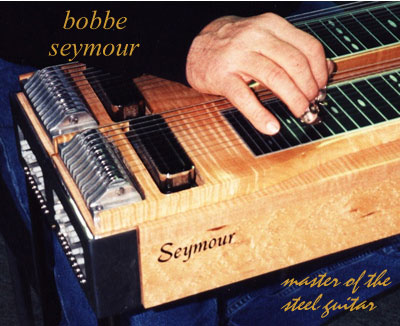 MWE3:
How did you get started in Nashville?
MWE3:
How did you get started in Nashville?
BS: I got started originally, when I really started playing for a
living was in about ‘57 in Dallas and Oklahoma City and all in
through the Western Swing states in about the middle of the ‘50s.
Soon as I got out of the Air Force I started playing for a living.
Then I went to Virginia for a little while and left Norfolk, Virginia,
playing rock and roll with some of the big rock groups at the time.
The Rondells and some of those groups. I was playing bass for those
groups. I finally decided I’d rather play steel guitar and go
broke than I would making a good living playing bass. I just had no
heart for bass, not even with rock groups. So I left there and just
went to Texas and immediately went to work in Texas. And it was good.
I was very glad that I did. When I went to Nashville and in one day
and I went to work for Ferlin Husky. I’ve never been out of work
in Nashville.
MWE3: You played with Gene Vincent?
BS: Yeah, that was in Virginia. As a matter of fact, one of the very
first things... we kind of went to school together. The guy that wrote
“Be Bop A Lula”, Sheriff Tex Davis, and got him started,
and got him his deal with Capitol. Sheriff Tex Davis was a very, very
good friend. He was the guy that did it all for Gene in the beginning,
got him started. He and I were really good friends. So all of that
kind of went together. And I played bass with him for a little while,
when I was in high school. Then my dad wouldn’t let me work with
him anymore. I was too young. He didn’t want me running around
the country and doing all of those things that you do when you’re
a young musician. He wanted me to stay in school and get a good education,
which I still didn’t do it, not the way I should have.
MWE3: So after Gene Vincent you started doing session work on the
steel guitar?
BS: Yeah, but that really wasn’t my object or goal. I just did
it to make money. I had no illusions of grandeur or anything. I just
really did not come into playing steel guitar to be a studio musician
but I still have six extremely good years at it because I was hungry
and wanted things like sports cars and a new house on the lake. (laughter)
So I got into sessions and they were really very good to me. You asked
about some of my favorite sessions that I did. What really stands
out in my mind are Johnny Rivers in Los Angeles. I did a couple of
albums with him there and then one of the first big country things
I did was Faron Young, here in Nashville. I was doing several sessions
a day here for a long time. And I didn’t really open the store
until 1982. Sessions had cooled down a little bit then but I never
had any trouble doing both of them at the same time. Since I was the
owner of Steel Guitar Nashville, I could take off whenever I wanted
to. But I also worked the road with Johnny Paycheck and several artists.
Faron again...and Jean Shepherd, John Connolly. Several artists I
worked the road as I had store. Because it was no problem. The store,
even still today, can kind of run itself. And I’ve got a really
good crew. So I’m outta here as much as I can stand to be.
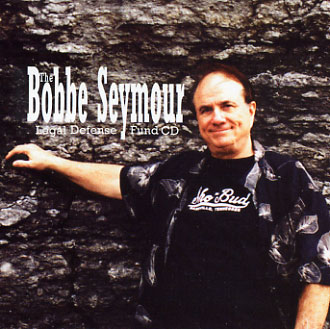 MWE3:
The Johnny Rivers stuff sounds interesting. Wasn’t he born in
New York?
MWE3:
The Johnny Rivers stuff sounds interesting. Wasn’t he born in
New York?
BS: He was actually born and raised in New Orleans! And Monroe, down
in Southern Louisiana. Of course, he was Jewish. And you would never
know that he wasn’t a New Yorker. And he had that strange accent
that they have in New Orleans. He was just a different kind of guy
but we all loved him. Herb Pedersen, a real good guitar player from
the West Coast, was playing rhythm on the tour that I did with him.
I hated it but we were paid well. And Herb was wonderful. You punch
up his name on Google and you’ll see a million things he’s
done. And a nicer person you’ll never meet in your life. He kept
us all from killing Rivers (laughter) and Rivers from killing us and
all that... He was just a really good guy. We kind of went to work
with him as a unit, from Nashville. A bunch of us Nashville studio
players went to work for Rivers on the road for a while. The Johnny
Rivers tour started in May of '74, was about 6 months long. The famous
studio players, were Herb Pederson, Ron Oats, Jerry Carrigan, Albert
Lee, and a couple of others I can't recall at the moment. There’s
a strange combination of guys here in Nashville. Everybody got along
really good, but we weren’t above having a childish argument
here and there. (laughter)
MWE3: You also worked with Elvis Presley. Did you get up close with
him at all?
BS: As close I could stand it or that I wanted to. I was into my own
life. I didn’t really care... It was just some studio things
that we did, several things that we did together. I had a thing at
the time where I could duplicate a complete string section and I do
it with a Fuzztone, a Boss tone and an echo unit. And I could play
complete sections and parts where they sounded real enough that I
was getting a lot of studio work because of it. I did a lot of stuff
with Mickey Newbury. Heaven Help The Child and American
Trilogy, and a bunch of those things where everybody thinks it’s
strings. It’s not strings. It’s funny, I didn’t get
credit on a lot of albums because, I found out later, that the producers
were charging the record companies for a full string section, but
just hiring me and paying me a tenth of what they were collecting
for the string sections. A lot of things like that going on that typically
happens in the music industry. I can still do it, but nowadays, the
thing is I do it with a midi thing on my guitar and I’m running
through a Proteus. But before all that sophisticated stuff came out,
I was doing it with a fuzz tone and an echo unit.
MWE3: Also did you play steel guitar on the Charlie Rich, “The
Most Beautiful Girl” track?
BS: Yes sir. I ran across a copy of the music that they gave us in
the studio, I found the other day, in my attic. And I thought, ‘Boy,
that could be worth something to somebody someday.’ And I was
just scanning over it, and it came down to my part and it said, ‘steel
guitar’ and then it said, ‘whistle lick’ on there.
It didn’t really draw the notes out or anything, it just said,
‘whistle lick.’ And I thought, ‘that’s going to
be cool some day, if I don’t lose this again.’
MWE3: That must have been done back in the mid ‘70s.
BS: Yes it was. I actually was booked on some live shows with him,
and I didn’t really do live shows. But I was booked on some of
the live shows with him. And he was drinking really, really bad and
he didn’t even show up on some of the things we had booked. And
then he ended up dying. He drank himself to death. That’s what
happened there.
MWE3: And Bobby Goldsboro, who I actually saw down in Miami back in
1968 with The Beach Boys.
BS: Oh yeah, I was working with him all through there. And let me
tell you something. He is the nicest, funniest, greatest guy I think
I ever worked with in my life. Nothing but great things about him.
I did his TV show and did several things and he treated me like a
king. He didn’t mean to, it’s just that he was just naturally,
hilariously funny. And the nicest guy... I mean he was a very precious
human being.
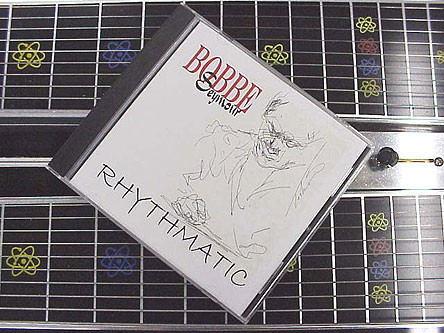 MWE3:
Can you remember your first steel guitar?
MWE3:
Can you remember your first steel guitar?
BS: Good lord, I’ve had thousands of steel guitars but I remember
the first ones that I had, my dad gave me for Christmas in 1952 or
something like that. My uncle gave me one first of all. He gave me
a single neck Kisel steel guitar. It didn’t take long for me
have it in pieces and make something else out of it. I probably personally
own 25 or 30 steel guitars myself right now. Most of them are kind
of collectible. Bigsby is a brand name of steel guitars that is pretty
expensive now and pretty desirable. There weren’t but 126 of
them ever made and I’ve got five of them I think, right now.
The Kisel was a six string lap steel that was given to me by my uncle,
but of course, I always wanted a Bigsby when I was a little kid and
then finally I got one after I got out of the Air Force. But by that
time, it was pretty well out of date and I switched over to playing
Emmons and Sho-buds and that’s what I kind of built my entire
career on. Emmons and Sho-buds. And Fender.
MWE3: Can you remember going from doing sessions to recording your
own music?
BS: There’s a real good answer to that. I had done thousands
of sessions and ended up buying my own studio on Music Row. And everybody
said, ‘You can make your sessions and do your own albums,’
and I said, ‘Yeah, I’m gonna do that.’ Finally one
day we booked a big custom session and we had arrangers and had all
the musicians show up and the artist did not show up. So I went in
and looked at everybody and I said, ‘Well, I’m not going
to pay you and send you home. You’re here, you’re gonna
work. We’re gonna do an album on me.’ And everybody 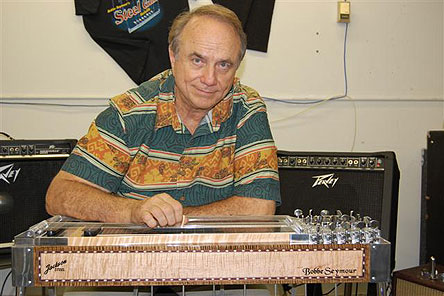 cheered.
And I just wrote out a bunch of chord and gave them some rhythm feels
of things. We did about nine hours that day worth of recording. And
when they left there the next day, I started building and writing
melodies and doing more arranging and ended up with a really nice
album that everybody loved. And from that point on...it was a pretty
successful album and it helped me in all my other endeavors so I just
kind of stayed with it after that and did it myself. It was because
of somebody screwing up that I started doing my first album. Of course,
I was always, in the beginning, as a little kid before I played a
note, I was a Les Paul fanatic. I loved Les Paul. Loved the way he
created his songs and played his own rhythms and melodies. All that
kind of stuff. Les Paul was quite an influence on me, even though
he didn’t play steel and I didn’t play lead guitar. But
I admired him as the artist and the recording guy that he was. I didn’t
really know him personally much. I was playing live in Chicago at
the NAMM show and he come running up through the audience... I did
“Little Rock Getaway” real fast on steel guitar. He came
tearing up through the audience, jumped up and ripped my picks off
and put ‘em in his pocket and reached down and hugged me and
ran back to his seat. And I thought, ‘Man that’s the finest
compliment I could ever have.’
cheered.
And I just wrote out a bunch of chord and gave them some rhythm feels
of things. We did about nine hours that day worth of recording. And
when they left there the next day, I started building and writing
melodies and doing more arranging and ended up with a really nice
album that everybody loved. And from that point on...it was a pretty
successful album and it helped me in all my other endeavors so I just
kind of stayed with it after that and did it myself. It was because
of somebody screwing up that I started doing my first album. Of course,
I was always, in the beginning, as a little kid before I played a
note, I was a Les Paul fanatic. I loved Les Paul. Loved the way he
created his songs and played his own rhythms and melodies. All that
kind of stuff. Les Paul was quite an influence on me, even though
he didn’t play steel and I didn’t play lead guitar. But
I admired him as the artist and the recording guy that he was. I didn’t
really know him personally much. I was playing live in Chicago at
the NAMM show and he come running up through the audience... I did
“Little Rock Getaway” real fast on steel guitar. He came
tearing up through the audience, jumped up and ripped my picks off
and put ‘em in his pocket and reached down and hugged me and
ran back to his seat. And I thought, ‘Man that’s the finest
compliment I could ever have.’
MWE3: Is your first album still in print?
BS: Yeah, it is. It’s called The Happy Steel Guitar. And
it was on GRT Records. It was a pretty successful album as far as
money went but of course I hated it ‘cause it was my first one.
The Happy Steel Guitar Album was released in 1976. Nelson Larkin
was the producer (didn't impress me much!)
MWE3: How many records did you cut for GRT? Was that the only one?
BS: Oh no, I was the leader on a lot of their stuff here in town.
Session leader. That’s what got me in with them. They were a
pretty big label at that time. But you know how labels are, they come
and they go.
MWE3: So your album Soulful Steel, that’s pretty recent...
BS: 2002, eight years ago.
MWE3: Are the early albums on GRT still in print anymore?
BS: No, they’re not, no. As a matter of fact, I don’t have
any for sale.
MWE3: How many of your albums are in print on CD?
BS: All of them that I have done myself are still available. In other
words out of 22 albums that I’ve done, 19 of them could be gotten
new copies.
MWE3: The Rhythmatic CD really blew my mind. It sounded like
you really wanted to do something completely different for the steel
guitar.
BS: Absolutely. And it deserves it. The steel guitar itself deserves
it. Somebody is gonna get on that someday and do some interesting
things like that. Steel guitar has always been kind of recorded and
all as just a hokey instrument, and there’s so much more to it
than that.
MWE3: Who played with you on the Rhythmatic album?
BS: Yeah, many musicians here in Nashville that are dear friends of
mine. And then, some out of Georgia, some out of the Atlanta Symphony
strings. And then on the horns, they’re all from Memphis Horns.
The rest of the guys, the rhythm section and all, they’re all
Nashville.
MWE3: Can you compare Rhythmatic to your other CDs?
BS: It’s totally different than anything else I’d ever done.
And it was a lot more money than anything else I’d ever done.
There were like 38 musicians on it. And a lot of overdubs. We just
through money to the wind on that and whatever it took to do it right,
we did it right.
MWE3: Rhythmatic doesn’t sound like a Nashville record.
It sounds like it could have been made in New York or Europe.
BS: Well, I didn’t want it to sound like every other one where
everybody gets their buddies together free and one of the will have
a garage with a studio in it and they’ll go in there and do it
free, and they just walk in with no arrangements, no charts, no nothing
and say, ‘let’s do this, this and that.’ Those things
never really come out really well. So I wanted it well thought out
in the beginning. A lot of thought went into that. A lot of arranging.
A lot of thinking. That kind of thing. Here’s the thing. My father,
being the big band guy that he was, even though he had died by the
time I started working on that, I wanted him to have been proud of
it had he still been here. So I wanted it done right. A great steel
guitar player heard that from Nashville, here just before he died.
His name is Jimmy Crawford. And he called me up and he was in the
hospital. He called me from the hospital and he said, ‘Bobbe,
that album is your legacy.’ He said, ‘that’s the best
thing I ever heard in my life.’ And that was pretty strange coming
from him because he was pretty much an ego kind of guy, and I loved
him very much, you know, Jimmy, but when he started giving me compliments
on that, I knew I’d finally touched his soul. And that meant
a lot to me.
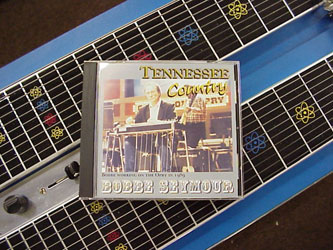 MWE3:
There was something for everybody on Rhythmatic. Jazz, Country,
New Age, World Beat...
MWE3:
There was something for everybody on Rhythmatic. Jazz, Country,
New Age, World Beat...
BS: Here’s something too, I said about it in my last newsletter.
People asked me questions about it for a couple years. I did a lot
of recordings with a guy named Mickey Newbury. He did American
Trilogy and a bunch of those things. And we were at my house one
night, just sitting around talking about music and how to produce
an album, that kind of thing. And Mickey looked at me and he says,
‘A good album is an album that you can hear over and over and
over and over and never get tired of it.’ He says, ‘If you
ever produce an album for yourself, produce it where you can hear
it over and over and over and never get tired of it.’ His albums
were that way.
MWE3: Do you have plans now to do any new albums?
BS: Sure! Lemme tell you what I’ve got to do for the country
folks. I’ve got to do another country Gospel album. I’m
going to do another pure country album. And then I want to do another
kind of jazz kind of album, with good songs, big tunes and maybe with
a brass section or something. I would also like to do about a ten
song album of standards. A sentimental journey kind of album. So I
can see another four albums in my future if I get my hands going again.
MWE3: Would the planned jazz album be along the lines of Rhythmatic
or...
BS: More be-bop kind of pure jazz thing.
MWE3: Interesting that you don’t hear the steel guitar more in
the jazz world.
BS: The only limitation of steel guitar is in the player. It’s
not in the guitar. There’s wonderful things being done by...
well you’ve heard of Buddy Emmons and Maurice Anderson. There’s
players that are absolute, top notch musicians that play steel guitar.
MWE3: Greg Liesz has appeared playing steel on numerous albums over
the past decade.
BS: I know Greg Liesz. I just look at him as kind of a country player.
I know him. He bought his guitars from me. I don’t really look
at him as a great buttkicker and all. Not like Maurice Anderson, Buddy
Emmons, Paul Franklin, Buck Reed. Some of the best in the industry,
you know? There’s another player in town named Tommy White, a
truly astounding player. And of course, if you ever get to see Lyle
Lovett, check the steel player out with him. His name’s Buck
Reed. He’s a killer, yeah.
MWE3: Steel Guitar Nashville also sells steel guitar CDs from other
players.
BS: Yes we do.
MWE3: What about Neil Young’s steel guitarist, he’s great.
BS: He’s a friend of mine. His name is “Big” Ben Keith.
MWE3: He had some great sounds with Neil.
BS: A real good kind of rock contemporary thing. He was never really
a good steel player but he was a kind of a stylish kind of guy like
what Gene Krupa was to big band drums. In other words, he had a big
name but he wasn’t really a great player.
MWE3: Did Ben make any albums?
BS: He made one. But it was kind of a...boy you talk about adult contemporary
kind of thing. It was a way out kind of thing. It was something that
you coudn’t even understand when you heard it. (laughter) He’s
a good friend of mine. I love him to death. ‘Cause I’ve
known him for 45 or 50 years. I think I met him in 1952 originally
or something like that. He worked all over in Nashville with different
guys. He was with Faron Young on the road for years. He’s producing
Jewel now or he did for a long time.
 MWE3: Well
clearly the pedal steel and steel guitar had a huge impact on American
pop music in the early ‘70s especially.
MWE3: Well
clearly the pedal steel and steel guitar had a huge impact on American
pop music in the early ‘70s especially.
BS: It’s a heckuva thing. I don’t think its even started
to take off yet, you know, compared to when it will. As people get
better and better and can play more and more different styles and
not be limited by...if the player is not being limited, it’ll
go on and be...it’ll grow and grow and grow.
MWE3: Any other things you can say about your store?
BS: Well, the store, of course, that’s my main support now that
I’ve butchered my hands all up and that kind of thing. I’ve
got a real good crew here that’s helping pull me through it so
I’m not going to fold up and put them out of work. You know how
that goes. I can’t quit and starve. I’ve got to stay after
it.
MWE3: Would you consider doing a compilation or some kind of history
release?
BS: Sure if I can find somebody interested in getting it out. I’ve
got all the stuff and we can sure do something great. I’d sure
be cooperative with anybody that wanted to do something.
MWE3: They love the steel guitar all over.
BS: I think its the beginning of a new thing! Its hard to believe
the steel guitar is a new thing but it seems to be tickling more and
more people all the time. Of course you know Buck Reed is traveling
with Lyle Lovett. They’re traveling all over the world. And I
know that he’s seeing an awful lot of this, what I’m talking
about. He’s got a couple albums out that are pretty astounding.
MWE3: Love to hear Buck’s CD. I was always a big collector of
steel guitar CDs. I didn’t have time to devote as much time to
the steel guitar as I wanted all those years I was the reviews editor
with 20th Century Guitar magazine.
BS: Sure, let me tell you something funny. The third issue of Guitar
Player magazine, done around ‘69, they did a big article on me
in the magazine. Somebody sent me a copy of it the other day. And
a lot of the things I said back then, look how many years ago that
was, a long time ago, and a lot of the things have come true that
I prophesied!
Thanks to Bobbe Seymour @ www.SteelGuitar.net



